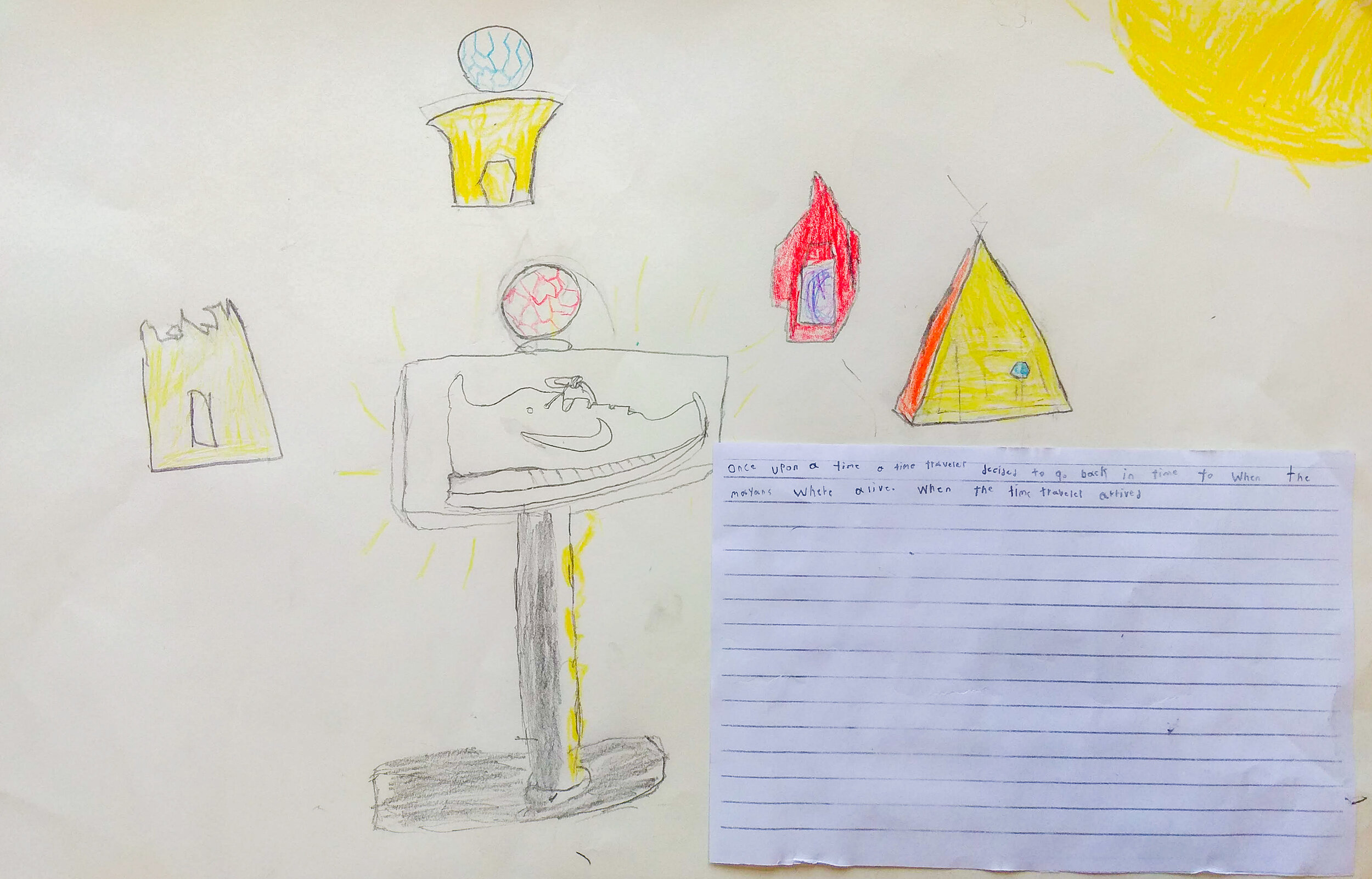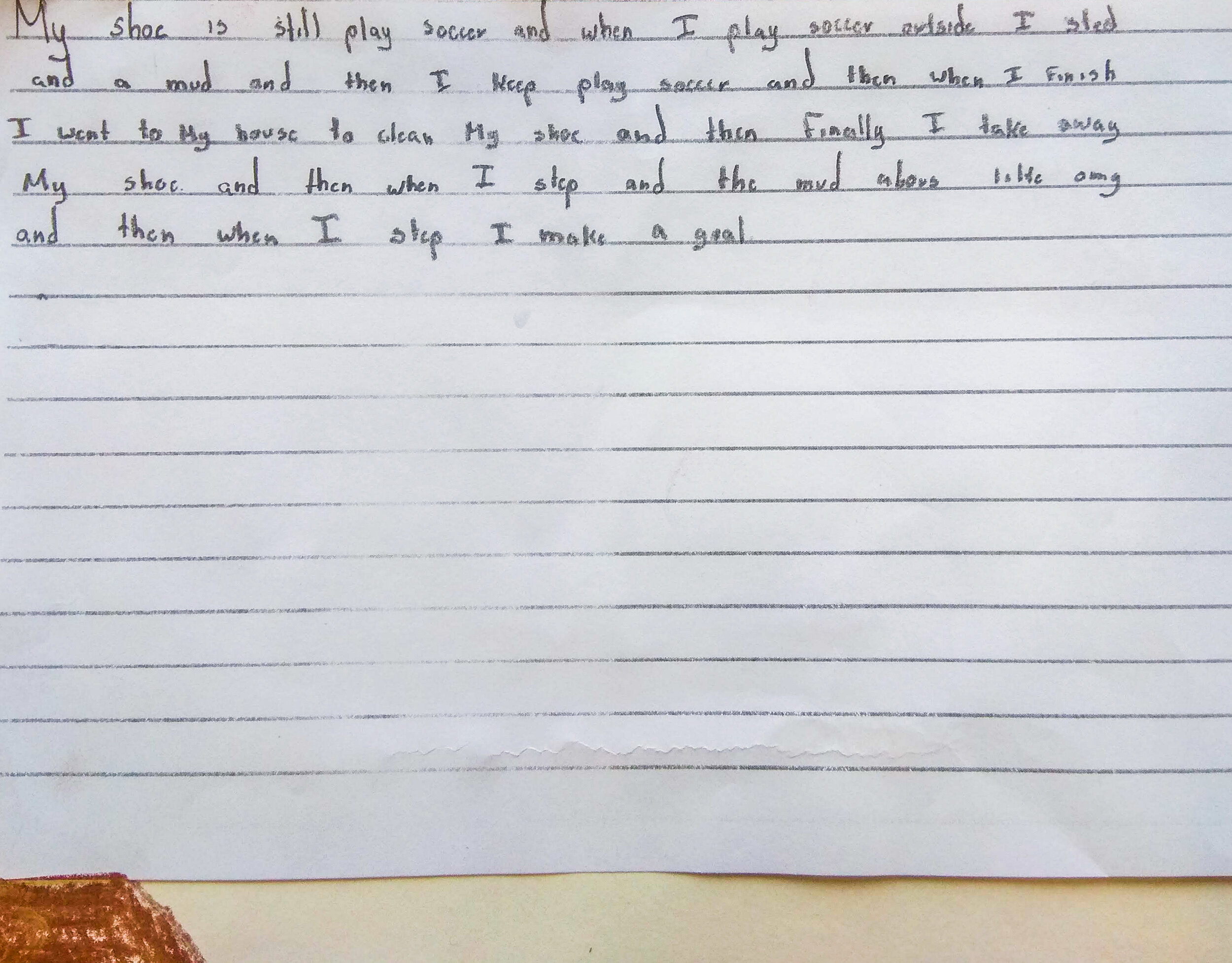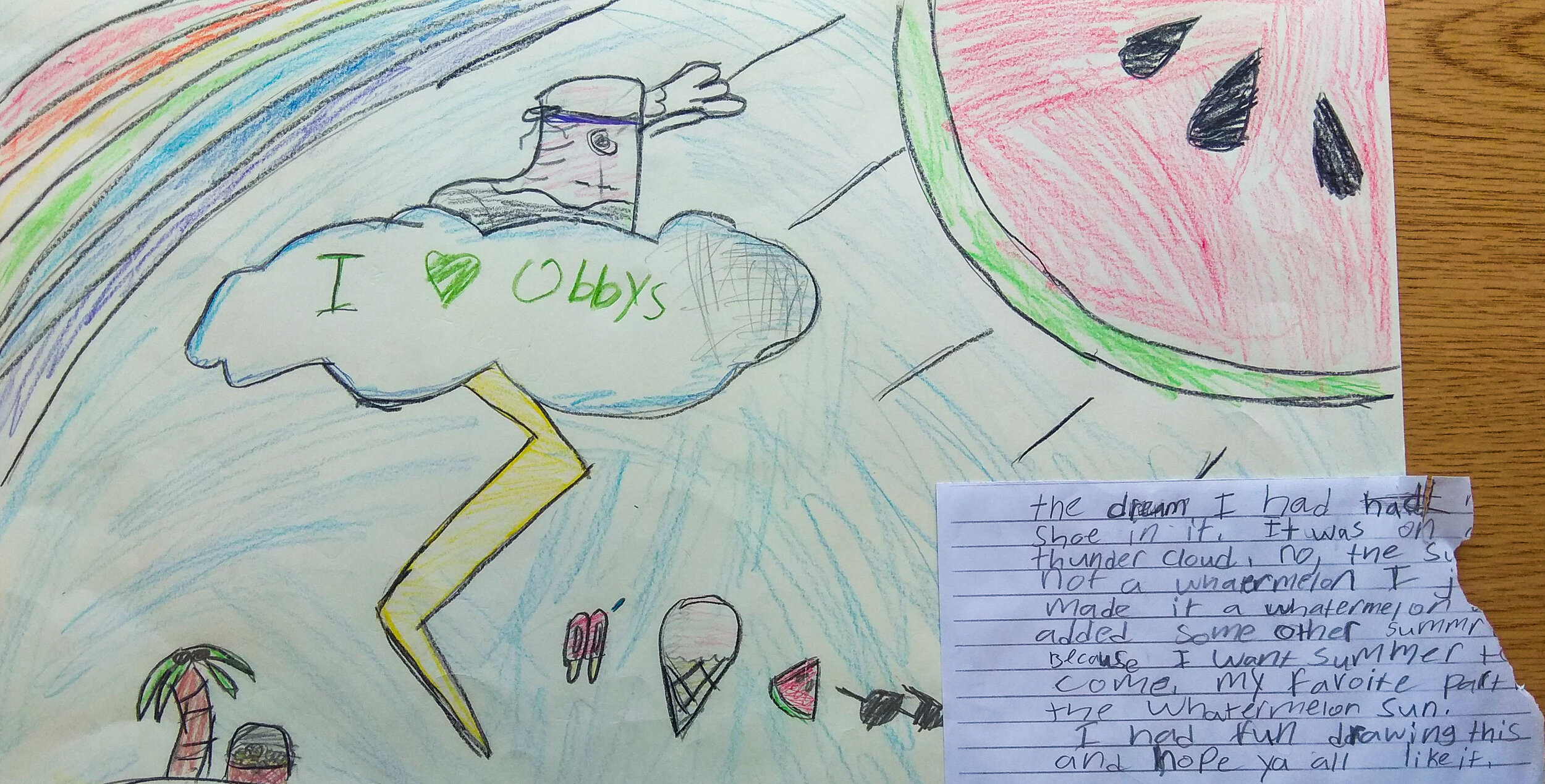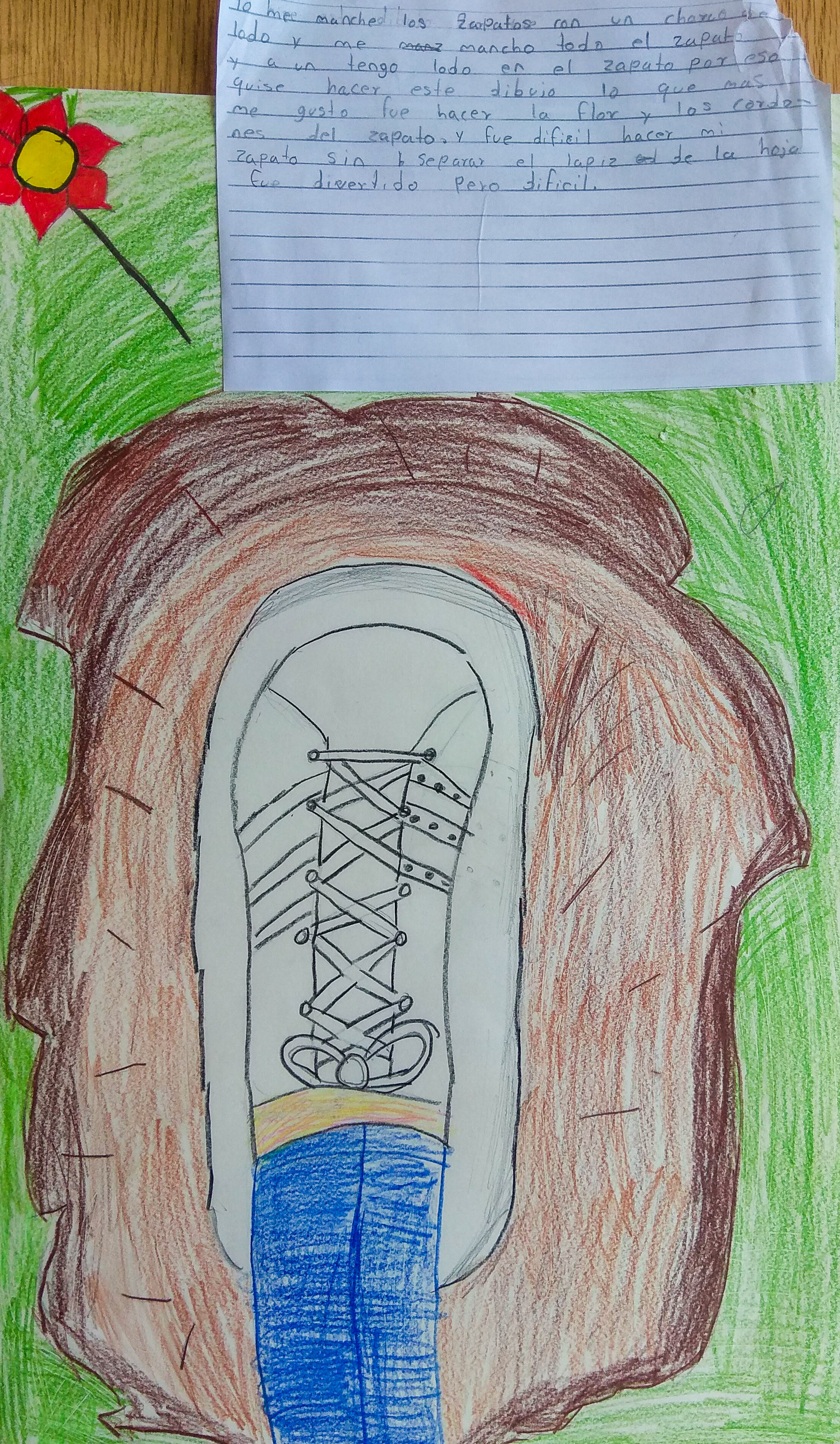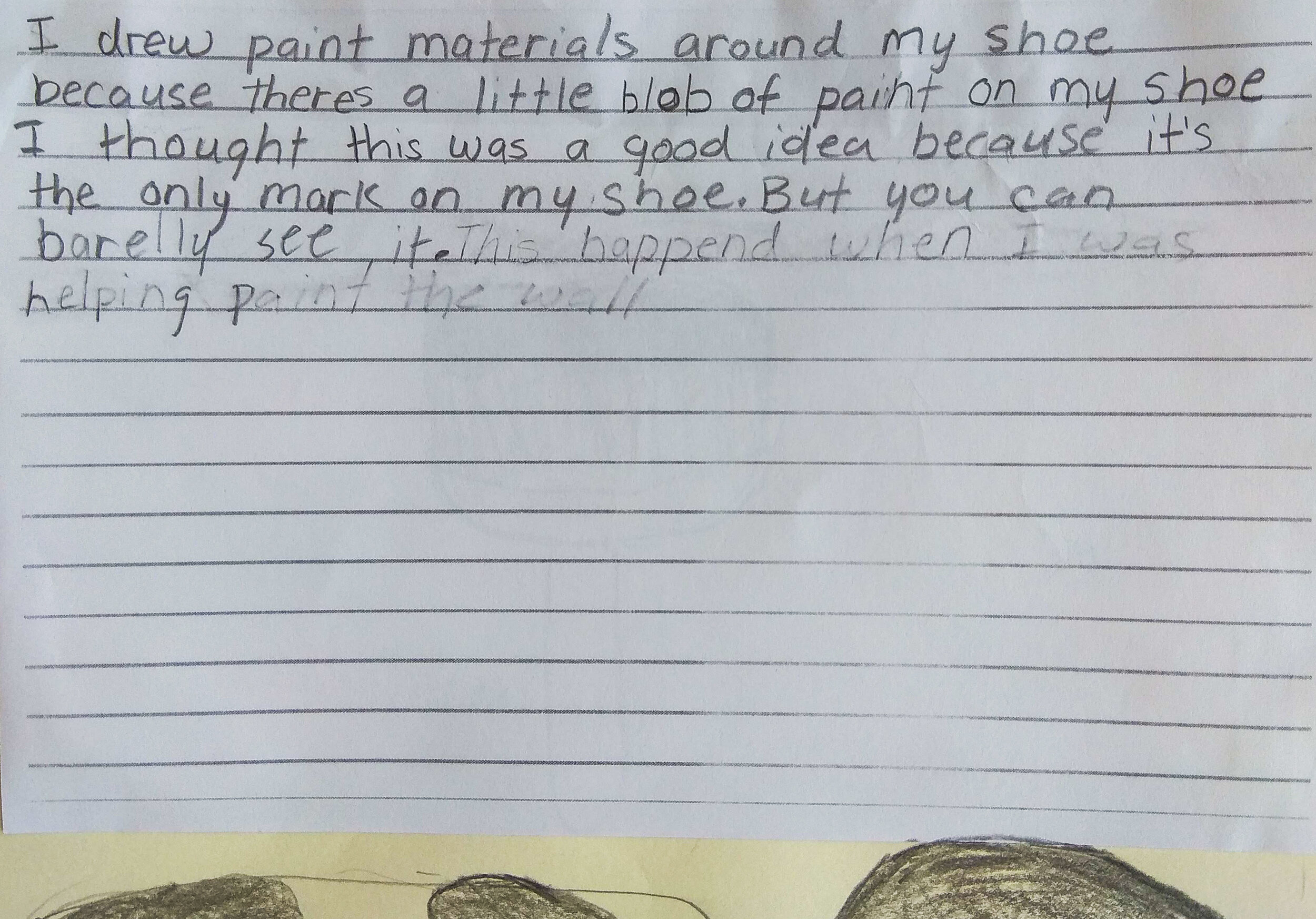A Shoe’s Perspective
Grade Level or Age of Participant: Planned for Grade 5 students, valid for any age.
Duration: 2 hours (can be split over two sessions)
School, Teacher and Classroom: Whittier Elementary International School, Jane Swatosh. Classroom 210
MCAD Teaching Artist: Anavi Mullick
Number of Students: 30
VISUAL ARTS CONTENT OR STANDARDS
Code: Visual Arts 5.5.2.2.1
Grade: 5
1. Strand: Create
2. Generate and develop original artistic ideas
1. Modify an original idea for a work of art.
CURRICULAR LINK / STANDARDS (if in a classroom only)
Code: English Language 5.6.3.3
Grade: 5
Substrand: 6. Common Core Writing Standards K–5
Anchor Standard: 3. Write narratives and other creative texts to develop real or imagined experiences or events using effective technique, well-chosen details, and well-structured event sequences.
Benchmark: 4. Use concrete words and phrases and sensory details to convey experiences and events precisely.
OVERVIEW OF PROJECT
This drawing project focuses on combining observational drawing with storytelling and narrative. Students will do a contour line drawing of their own shoes, adding visual elements to emphasize their personal stories/narrative.
“BIG IDEAS”/ ESSENTIAL QUESTION(S)
What big idea or question(s) will students explore and wrestle with?
How do you learn to draw what you see, not what you know? How do you tell a story through images?
STUDENT OUTCOME OBJECTIVES
Students will:
1. Develop their creative thinking skills as they create narratives of a non-living object.
2. Expand their observational drawing skills by slowing down and following the contours of a still-life object, (contour line drawing).
3. Think about the process of editing, as they will add/remove visual information that contributes to their personally chosen narrative.
PRIOR KNOWLEDGE
- Little or no drawing experience
- Basic writing skills
LESSON PREPARATION TIMELINE
- Brainstorming Meeting with Lynda Monick-Isenberg (02/20/2020)
- Planning Backward Model Draft 1 (02/23/2020)
- Revised Planning Backward Model (02/25/2020)
- Create Materials Budget
- Create exemplar
- Reference Artists
- Gather materials
EXAMPLES OF ARTWORK
Allison Kunath- Seven years of contour line portraits
Drawings by previous students who participated in a similar lesson plan.
Julie Mehretu, Alberto Giacometti- Gesture Drawing
ADDITIONAL RESOURCES
http://www.allisonkunath.com/blind-contour-portraits
http://www.iansklarsky.com/portraits
ASSESSMENT
- One-word verbal share that describes their experience of the lesson.
- Written feedback; what did you like most about today? What did you find challenging?
MATERIALS
Supplies needed for each student
- Paper - 3 sheets each, 12”x 9.5” ( One for blind contour drawing, one for contour drawing/coloring and one to place still-life object on), extras.
- Graphite Draing Pencil
- Color Pencils - assorted colors
- Printed artist works to show students or image to project on white board
- Ruled paper for writing
- Pencil Sharpener
LEARNING ACTIVITIES AND TIMING
1. Introducing the project (10 min).
- Talk about drawing as a universal visual language, brainstorm with students, different professionals who use some form of drawing. Painter, printmaker, architect, scientist, furniture maker. Show them different kinds of drawings-gestural, contour, etc.
2. Showing artist samples of Blind Contour drawings. (5 min)
- Do a demo of the blind contour drawing process. Do not finish the drawing. Have them watch – and share what they notice about what you did.
3. Blind contour drawing of their shoe. (5-10 min)
- Let them know the winner of this ‘race’ is the last to finish. Suggest they draw as slowly as a snail crawling on the surface of the shoe.
4. A sighted contour line drawing. (20 min)
- Have students reflect on the drawing. What did they notice about the shoe? Ask them to speculate about where the shoe has been, what has it walked through, how did it get here?
6. Coloring (Color Pencils) (20-30 min)
5. Write down their stories. (15 min)
- What does it look like? Has it got colorful shoelaces, long? skinny? muddy? Is its sole worn out?
- Where did it come from? A store? A hand-me-down? Somewhere else?
- Think of it as describing the biography of your shoe, or a story from the shoe’s point of view.
- Can be invented/fictional.
6. Sharing their stories (20 min)
- 30 children, maybe a minute sharing, optional sharing.
- Sit in a circle to share.
7. Collect the stories and artwork for documentation purposes.
- Display work around school
8. Evaluation (one-word verbal and two-three written questions) (5-7mn)
etc.
- while sitting in a circle.
- Remind children to write names on the back of the drawing.
TEACHING ARTIST REFLECTION
- Students may find it challenging to come up with their own stories. They might be frustrated that their drawings look different than expected.
- This project relates to their overall curriculum as they have been recently learning to research and summarize their readings and well as write their own fictional stories. The project will address their creative writing skills.
- Students work will be displayed in the hallways of the School
- Feedback will be received from students, teacher, and self-evaluation.






